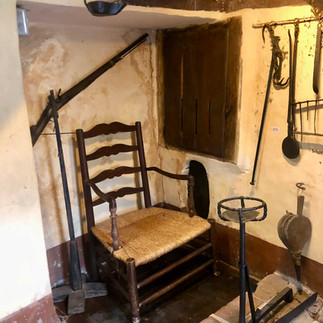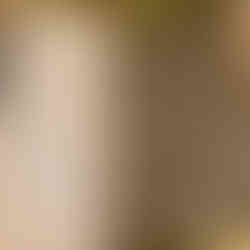Caves, Camisards, and Clandestine Church
- JanetJoanouWeiner

- Apr 13, 2024
- 4 min read
The Light Shines Through, The Huguenot Resistance Series Book 2, will be available in May. Wohoo! I can't wait to share the story with you. In it, we follow Huguenot Suzanne on her spiritual, emotional, and physical journey in a time of heavy persecution by King Louis XIV at the beginning of the 18th century.

*The Huguenots were French Protestants in the 16th - 18th centuries
I thought it would be fun to share some locations that appear in the book or served as inspiration. Let's go!

The hamlet of Mialet
Throughout the centuries, the Cévennes region has proven ideal for hiding from oppressive forces. The landscape, full of scrubby brush, green oak trees, and best of all, caves, has served as an excellent cover for many.

Huguenot Cave (one of many)
When the King revoked the Protestants' right to exist, up to 250,000 fled the country despite closed borders. Authorities jailed, tortured, and executed thousands more. A simple conversion to the faith of the King would have spared them. The Huguenots' commitment to the practice of their beliefs, whatever the cost, was remarkable.
Those Huguenots remaining in France converted by force. The majority did so in name only and the church moved underground, meeting in caves by night at significant risk. If apprehended by the King's soldiers in a clandestine worship gathering, the consequences were severe. Public torture and execution on the notorious rack-like "Wheel" awaited the pastor. Huguenot men were sent to row in the galley boats in Marseille harbor until their death, which usually came in under two years. The women were imprisoned indefinitely and their children sent to convents for reeducation at the parents' expense.

Max Leenhardt, The Meeting in the Desert: The heroic fight for freedom of conscience

Execution on the Wheel
Despite all this, the Huguenots met frequently, despite frequent betrayals, as happened in the cave pictured here. We've visited many times and imagined the scenario as we worshipped by candlelight and shared Holy Communion. A moving experience.


Now we move on to the Musée du Desert, the Museum of the Desert, in the eastern Cévennes. Why "desert"? The Huguenots identified deeply with the ancient Israelites in their wanderings and persecutions.
Winding up the mountain, we arrive at the hamlet of Mialet and its cluster of stone homes that have withstood the ages. We enter The Musée du Desert, the former home of Rolland Laporte, a young Huguenot leader and inspiré (prophet). You will meet him, his family, and entourage in this setting in The Light Shines Through. After visiting this museum many times through the years, it was interesting to bring the family to life.


In 1702, after decades of persecution, the Huguenots rose in revolt against the King's soldiers. The Camisards, as the Huguenot fighters were called, held out against the authorities despite the odds.
Authentic artifacts fill the Musée du Desert. Here are some photos of a visit with our grandchildren.
Upstairs entryway with stone sink — Grandchildren testing the iron cook pot —The warmest chair in the house nestled into the kitchen hearth
During the years of concealing their Protestant faith, Huguenots often had to hide, literally. Many homes had a cachette, a hiding place. We find this one by removing the bottom plank of the kitchen cupboard. Built into the wall, with the cachette dug out underneath and extending under the floor, it could fit several small people or a few larger ones.

The Cachette
Musée du Desert artifacts, clockwise: arrests by King's soldiers, Rolland's Bible; Story of the "Uprising of the Cévennes Fanatics" (wonder what the author's opinion is...!!); Psalter of Jean Cavalier (another Camisard leader who appears in my book); period weapons; letter signed by Rolland
Huguenot scenes from the time, clockwise: "Réfugiés," fleeing France; Secret Nightly Bible reading; Camisards confronted with King's dragoon soldiers; Abraham Mazel's famous dream that sparked the revolt (read more about this in The Light Shines Through); marriage in the "desert" (technically illegal outside the faith of the King); young prophetess speaking Biblical truth
As depicted in the last scene above (bottom left), a prophetic phenomenon broke out among the Huguenot youth during this time. In their sleep or awake, these young people could speak and teach whole Biblical passages far beyond their knowledge or training—and in perfect French when they spoke only the local dialect. Even enemies infiltrating the worship meetings to find proof of fraud had to admit it was genuine. This outpouring of the Holy Spirit is also a subject of The Light Shines Through.
Another important place in the story is the fort in St. Hippolyte du Fort, built by King Louis XIV to house Huguenots and other criminals. Authorities incarcerated the young prophets there as well.
I have to say, it's an ominous place even today. This photo is from a website as visitors are not allowed into the courtyard except for special performances, as depicted below.


Water mills feature in the book. There are two across and down the street from my home, the Château de Planque. Back in the day, the Château, the watermills, the river/fishing rights, and several vineyards were all part of the Domaine de Planque.

First watermill

Second Watermill
Below this lovely stone building, the water mill used to grind wheat into flour and press olives into oil. The other side has several tall windows overlooking the river. In the book, Suzanne's best friend Marguerite lives and works here.

The main character, Suzanne, lives in the house on the left below, in the Domaine de Planque. The upper corner of the Château de Planque is visible on the right.

Stretching out in front of "Suzanne's" house is this beautiful field. Formerly filled with vines, tended by Suzanne's (fictional) family. Beyond the trees on the left runs our lovely river Vidourle.

Et voilà! You've now visited some of the highlight locations of The Light Shines Through. I hope you enjoyed the tour!
La vie est belle . . .





































ok
kopi panerai ure
kopi patek-philippe ure
What a beautiful series of photos. You are gifted in photography too💕
They reveal the written depictions so giftedly portrayed in your writings.
Bless you Janet
Debi Peterman